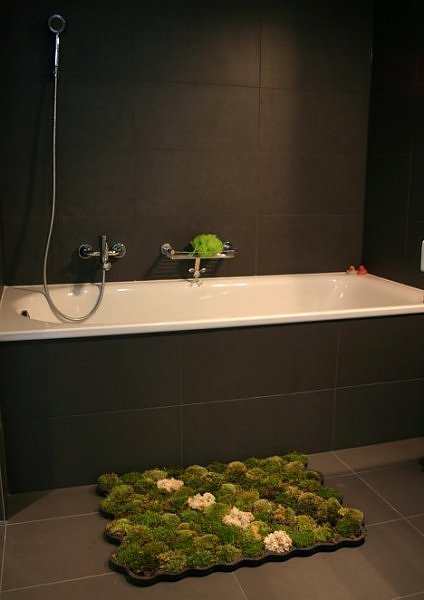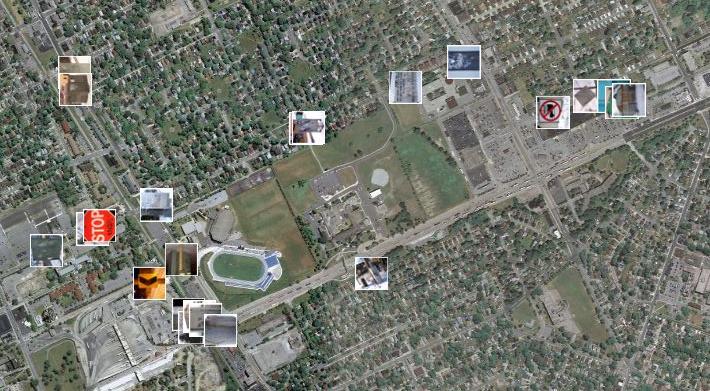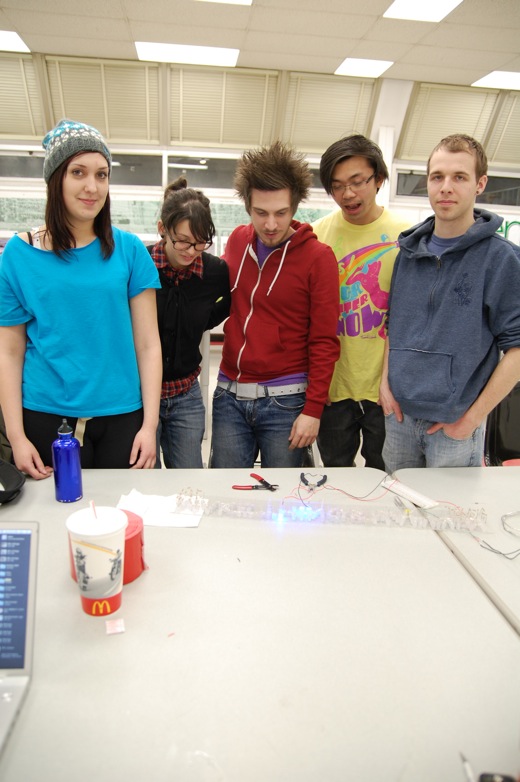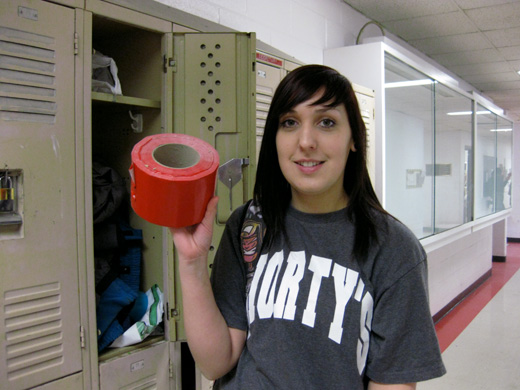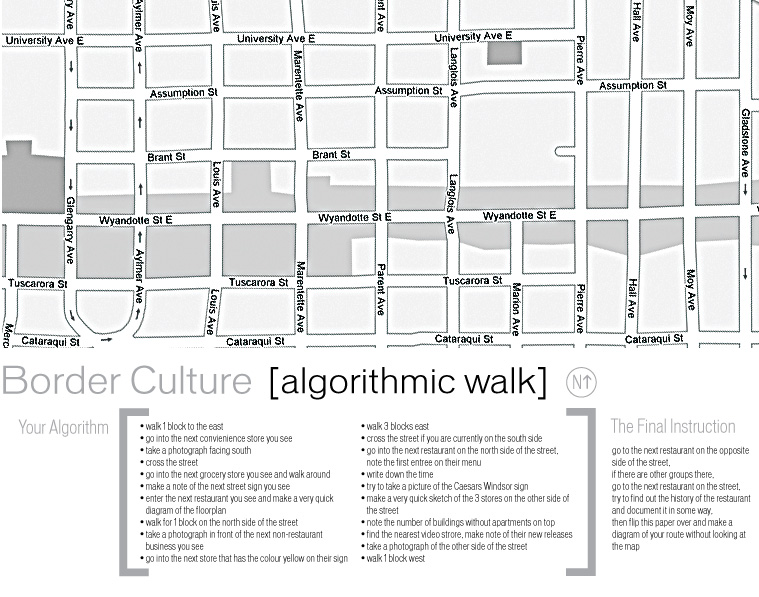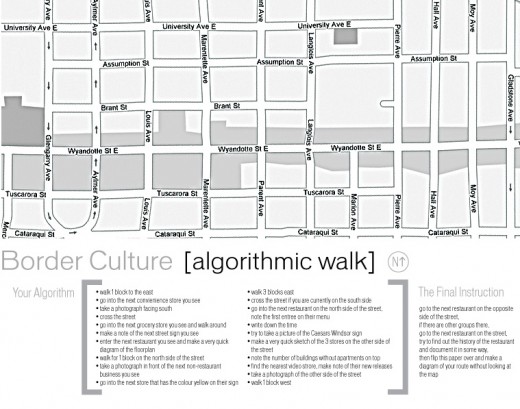This project demonstrates an interesting way to use free samples of linoleum tiles for street mosaics. These tiles originated in the 70s in Philadelphia and are also called Toynbee Tiles. Construction seems fairly simple, though a bit time consuming, but could be a great addition to any sidewalk. The video is about 6 minutes and worth watching.
Moss Carpet – La Chanh Nguyen
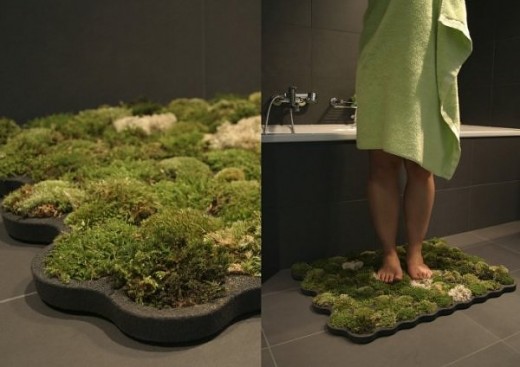
In the summer of 2008, Broken City Lab’s early days, we discussed using moss for a small number of projects. While the current weather is not permissive of working outdoors with plants, I wouldn’t mind giving moss another chance come spring. La Chanh Nguyen is way ahead of us, creating moss carpets for use indoors! They never need to be washed and are resistant to mould.
“Created by Switzerland-based industrial designer La Chanh Nguyen, the small indoor greenspace features three types of live green mosses – ball moss, island moss and forest moss – that grow in individual “cells” of plastazote, a decay-free foam. This lovely little bathmat can even thrive under the dubious care of the green-thumb challenged: mosses flourish in damp, humid places, making bathrooms ideal homes for these comfy carpets.”
Detroit Housing Crisis – $1 Homes
This came up in the Border Culture class today and I had to post it.
$1 homes in Detroit.
But it would be wrong
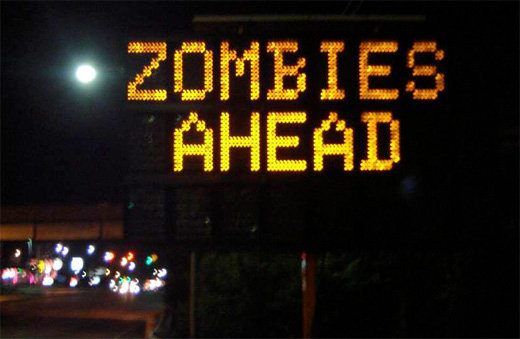
While it would be highly illegal, potentially unethical, and generally a very bad idea to hijack one of those blinking road signs, either as part of a thoughtful and considered public intervention or simply in the name of free-spirited high jinks (pictured), illustrated instructions for doing precisely that are available for perusal by the curious. [via the heretofore useless-to-me car blog, Jalopnik]
Victory Gardens
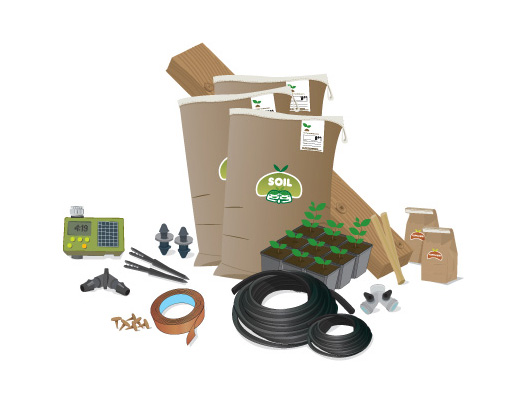
Victory Gardens is a new project by Amy Franceschini. The project recalls the WWII victory gardens project that encouraged citizens to grow their own food as a tactic to keep them calm over the war and support their troops. Franceschini, the daughter of an organic farmer and an industrial farmer, takes the project back to where it began—in front of the city hall buidling in San Fransisco, where they planted a large garden and since introduced a pilot project to disseminate the skills and tools needed to do urban-scale gardening across 15 households throughout San Fransisco.
There’s also a write-up on the SF Victory Gardens 2007 project in the previously mentioned JoAP.
I know FedUp is working really hard in this city, and that Tom Lucier proposed planting a garden for the downtown mission, and that Scaledown once (maybe) suggested the old Greyhound station downtown is turned into some kind of market, and that there’s rumours of a symposium surrounding urban activism that may discuss some of these very things… so (since this is what BCL does) I have to suggest that we move forward with the planning for a large-scale urban/community gardening plan, something like turning 10% of the riverfront into a community garden (maybe on the slopes that lead up to University Ave). Anyone interested?
[via]
My Neighbourhood; A Tag Project
With the help of Panoramio, a site that allows users to upload images and plot them using Google Maps, I created a project where I mapped the routes that I walk on a weekly basis. I did this by photographing the tags I see on my walks, then plotting the images on the map. There are three main taggers in my neighbourhood; Beast, THC and Jerk. I tagged the appropriate photos on Panoramio with the names of these taggers. I plan on extending this project to include more images of tags in other neighbourhoods around Windsor and opening it up to others to contribute their images as well.
Check out the photos here.
We Learned Electricity!
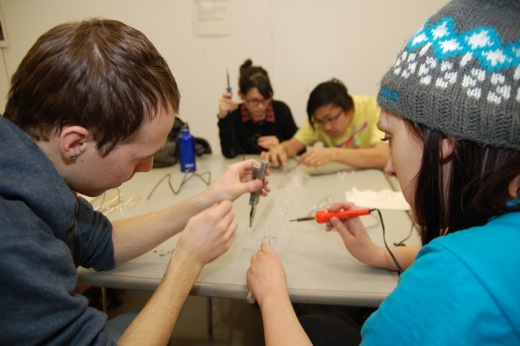
We’re in week 3 of this LED sign project, and we now know how to finish it up. We had previously soldered all the anodes on the LEDs, but we were a bit confused about the connections of the cathodes and resistors. As we had been working off of a MAKE video, which breezed over the connections, we realized we really weren’t entirely sure of how to make those final connections.
Continuing Work on the LED Sign
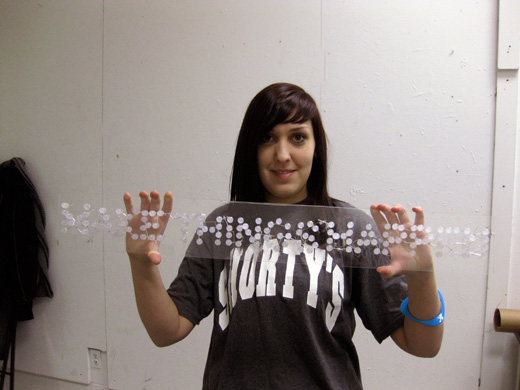
Michelle and I finished soldering the anodes on the LED sign yesterday morning. Next is soldering all the resistors to the cathodes—this is a hilariously longer process than I think any of us anticipated, but it’s good. I’m really looking forward to seeing it lit up!
Also, thank you to whoever passed on the big roll of 4″ red tape!!!
Dour Power [Nathan Coley]
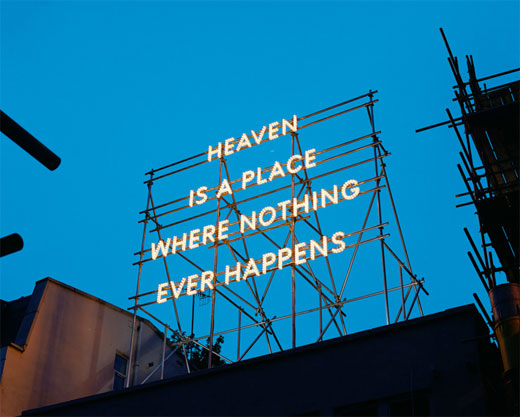
Nathan Coley – Heaven Is a Place Where Nothing Ever Happens (2008)
Since one of the recurring project ideas for BCL has been to “send a message to Detroit” (though this particular wording sounds decidedly menacing, which is hilarious and probably unintentional), and since one of the ideas for accomplishing this was to build a lighted sign that would be visible across the Detroit River, I thought it might be appropriate to bring Glaswegian artist Nathan Coley into the discussion.
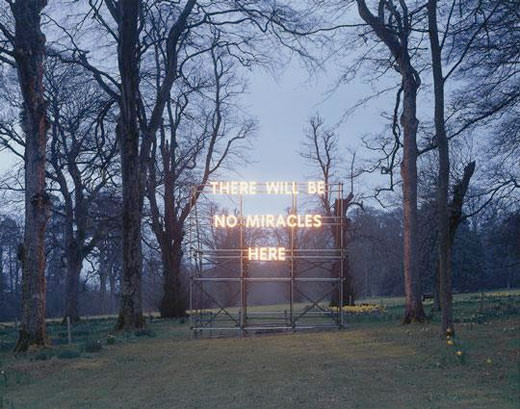
Nathan Coley – There Will Be No Miracles Here (2006)
Coley is perhaps best known for his incandescent light signs, such as these, and, while the tenor of his work is decidedly more dour than much of what the Lab sets out to do, his work does bring to bear certain issues that might be of interest. In particular, his work explores the ways in which modes of public address—particularly architecture—constitute articulations of collective desire and belief, the “values” of a place. Coley himself has a particular chip on his shoulder re: organized religion (which I, for one, appreciate), but some of the issues he works through might be more broadly-applicable, just the same.
If Broken City means to “disrupt and engage the city,” it’s important first to have a sense of what values are embodied in the existing structures and infrastructure of that city. I’m quite sure I’ve spent a good deal less time thinking about this than many of the other people here, but, so far as I can tell, Windsor’s public front would seem to suggest a firm conviction in the redemptive potential of (1) the automobile, (2) the Casino, (3) trans-border truck traffic, and (4) massage parlors. It’s not quite the historical God and country business that Coley contends with, but I don’t see any reason why the tactics he employs couldn’t be as well-suited to the interrogation of a strip mall as they are to places of worship, etc.
Anyway, this interview, given on the occasion of his nomination for the 2007 Turner Prize, is definitely worth a look, as are pieces like this one from 2006 where he makes use of dazzle camouflage (a geometric camouflage pattern developed in Britain by artist Norman Wilkinson and used extensively during World War I).
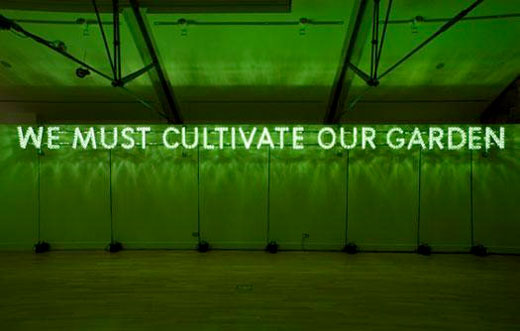
Nathan Coley – We Must Cultivate Our Garden (2007)
Algorithmic Walk
Last Thursday in Lee Rodney’s Border Culture class, we went out on an algorithmic walk to explore Wyandotte from Glengarry to Gladstone. The students were given the algorithm and map I made that you see above, but with varying order, and then sent out. As the goal was to have the students become familiar with the many grocery stores, restaurants, and commercial / architectural / commercial peculiarities of the area, the algorithm was based around specific instructions to guide them to pay closer attention to details through photographing, sketching, and noting, rather than an algorithm to guide them down different streets.
I think the walk (and algorithm) went over pretty well. We’ll be looking at all the students documentation and hearing about their adventures this week in class (some students have already started posting on the Border Culture blog), but I think something like this on a larger scale would be another great addition to the ongoing walking series that have been led or initiated by Tom Lucier over the last few months. We’ve spoken about this before, but now we just need to set a date.
